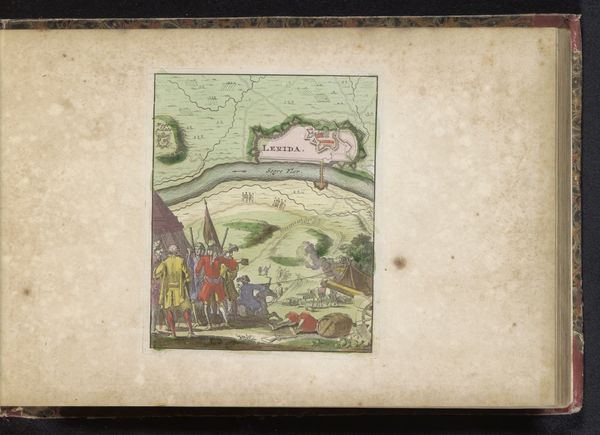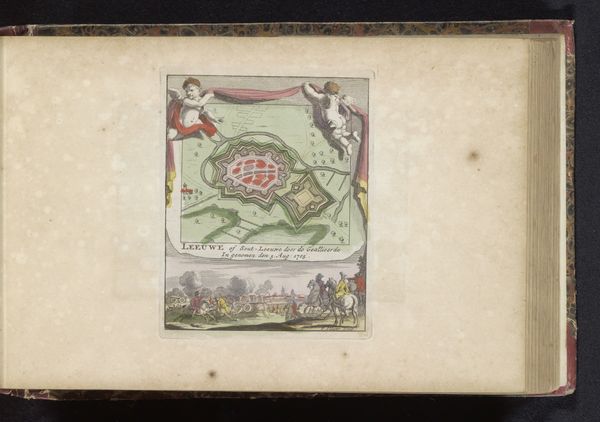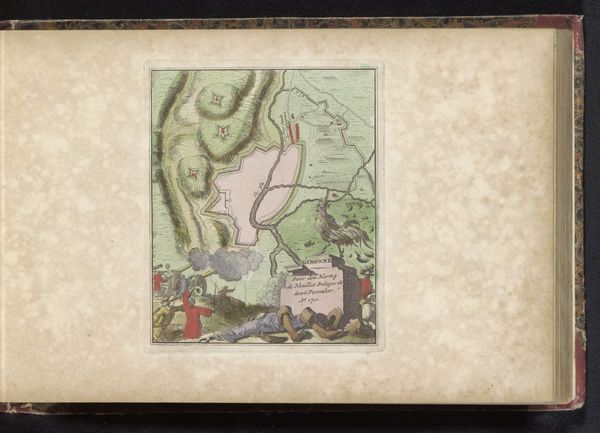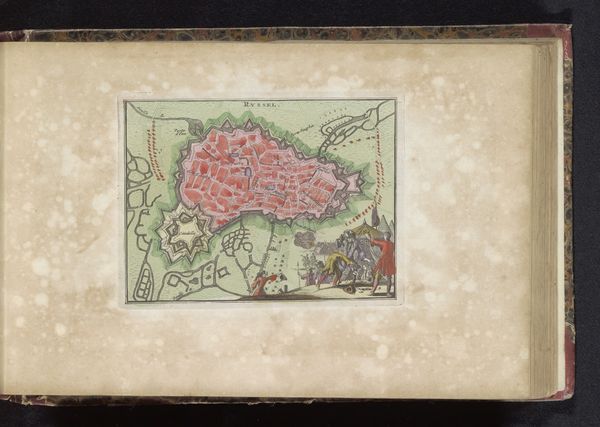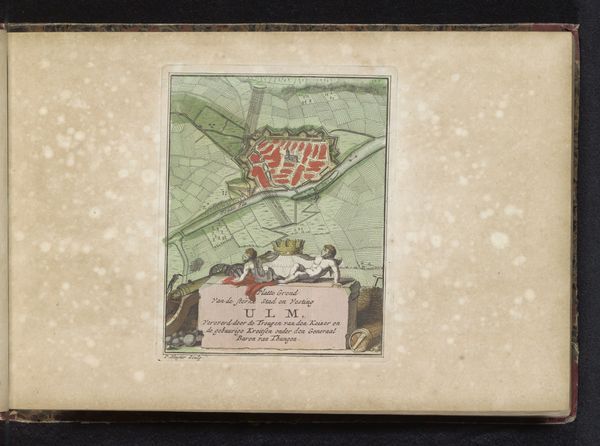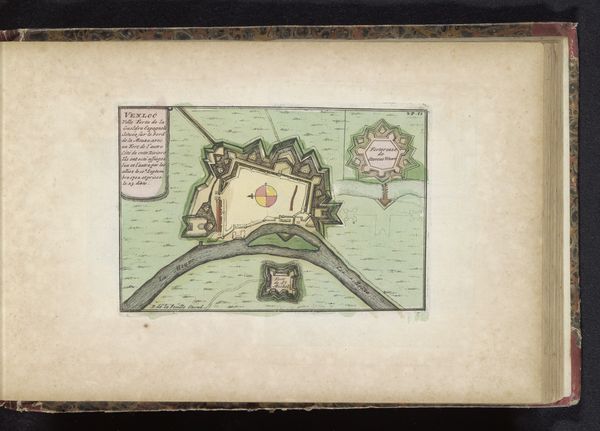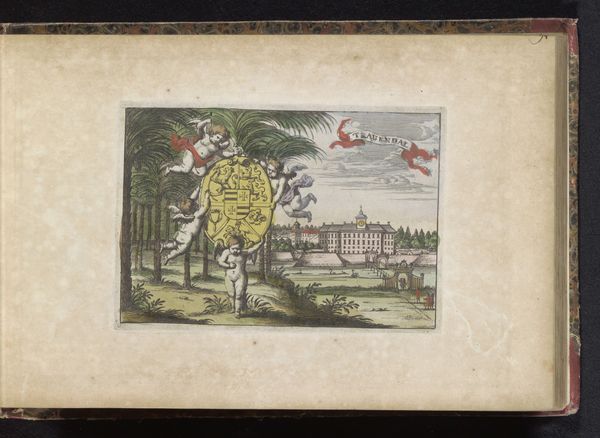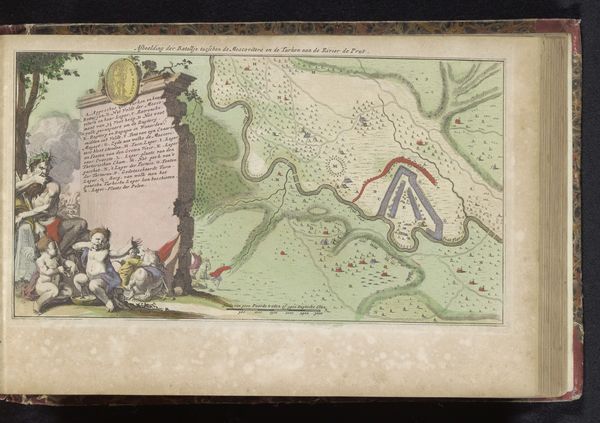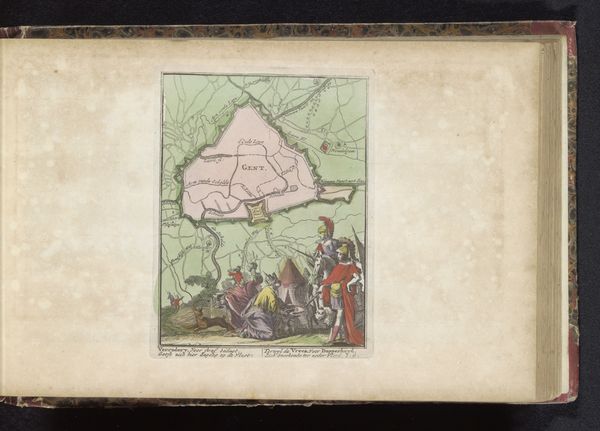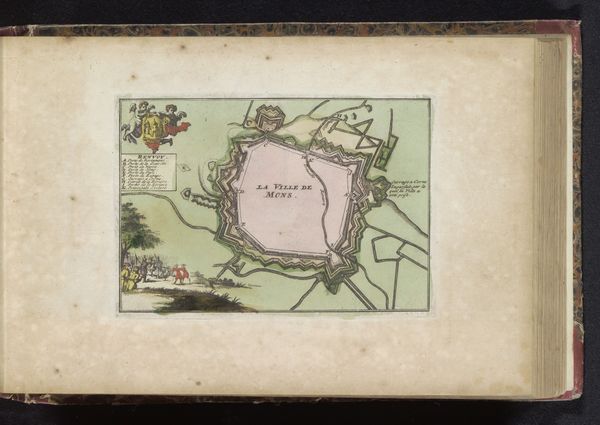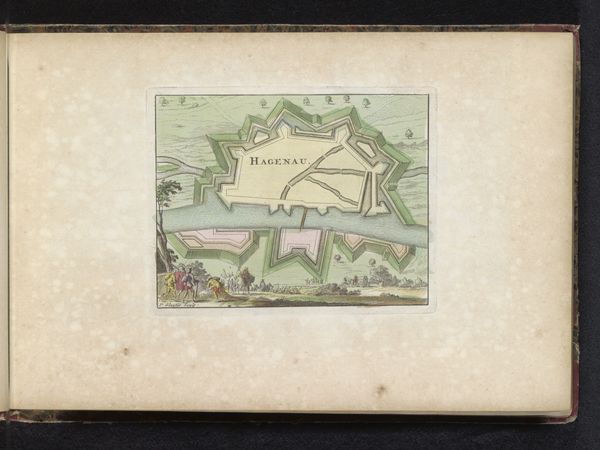
drawing, print, paper, watercolor
#
drawing
#
water colours
#
baroque
# print
#
landscape
#
paper
#
watercolor
#
coloured pencil
#
cityscape
Dimensions: height 155 mm, width 128 mm
Copyright: Rijks Museum: Open Domain
Curator: Here we have an intriguing cityscape entitled "Beleg van Menen, 1706", crafted around 1735 by an anonymous hand using drawing, watercolour, and print techniques on paper. What are your first impressions? Editor: Well, aside from the captivating aerial perspective of the city itself, my gaze is immediately drawn to the lower portion: the lion clawing at what appears to be a fortress gate. It evokes a sense of aggression, of forces clashing. There’s a figure prostrate near the base; the composition and scale creates an emotionally charged impact. Curator: The layering of print, drawing, and then watercolor washes certainly underscores this tension between calculated strategy, and its impact at street level. You see how the use of watercolours creates both precision and an almost ethereal lightness? It makes the depiction more immediate. Editor: The Lion symbolizes courage, of course, or brute force and domination. Its placement before that imposing gateway and paired with the fallen soldier indicates perhaps, the human cost. What could this siege represent culturally? Curator: This particular depiction of the Siege of Menen fits within a larger pattern of representing conflict as both a rational, map-able endeavor and also as an almost operatic drama. The material choices reflect this duality perfectly; inexpensive paper made widely available through printmaking technology brought the battlefield to the public sphere. Then, with the addition of hand-applied watercolour, imbued with emotional power and immediacy, they further elevated the significance. Editor: Indeed, viewing it this way heightens my awareness. It seems designed to implant a long-lasting memory. The lion, though fierce, is also noble, and therefore unforgettable; a symbol chosen and then reinforced through material and composition. The impact on contemporary audiences must have been striking. Curator: Ultimately, this artwork invites us to think about how maps were consumed and internalized; the blend of mechanical and handmade speaks volumes about how information was received, shaped, and distributed at this particular moment in the early eighteenth century. Editor: Exactly, I now see it as far more than just a cityscape. It's an evocative piece brimming with the power of culturally embedded symbols—all while quietly attesting to its method of creation.
Comments
No comments
Be the first to comment and join the conversation on the ultimate creative platform.
